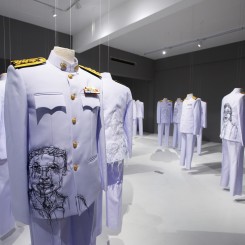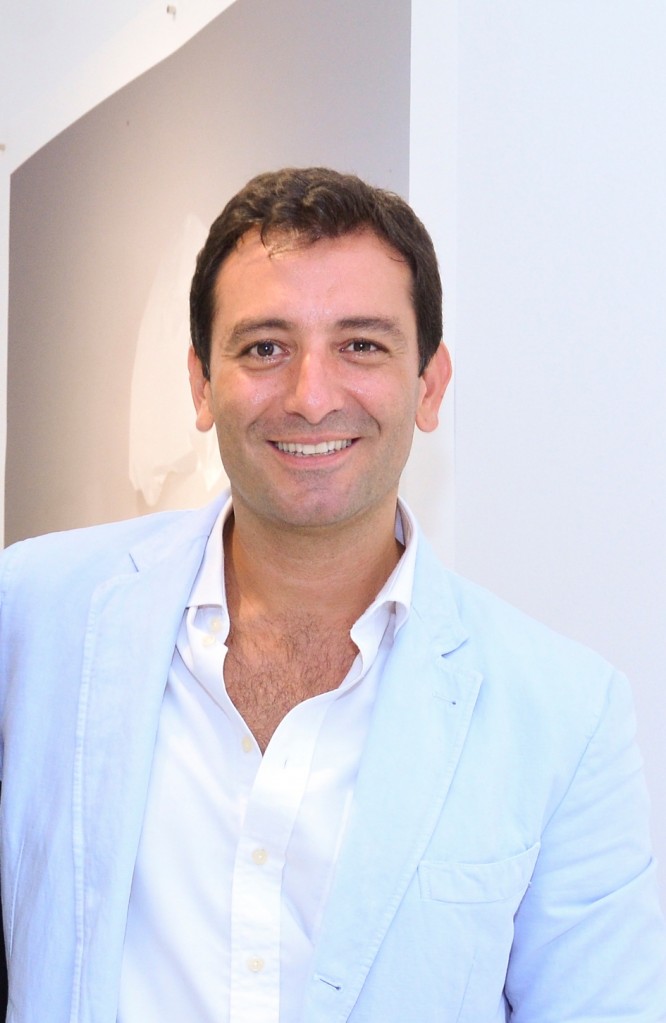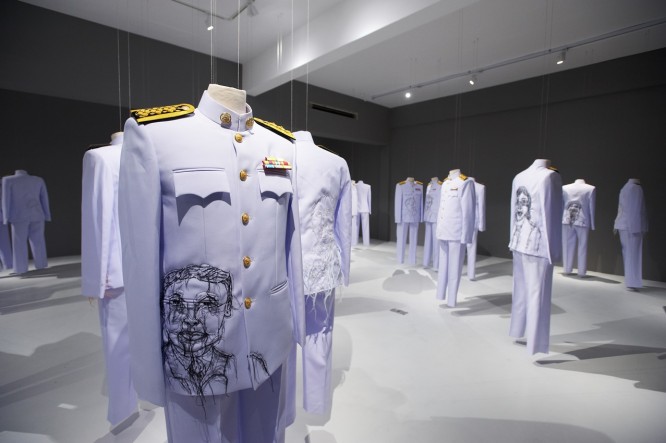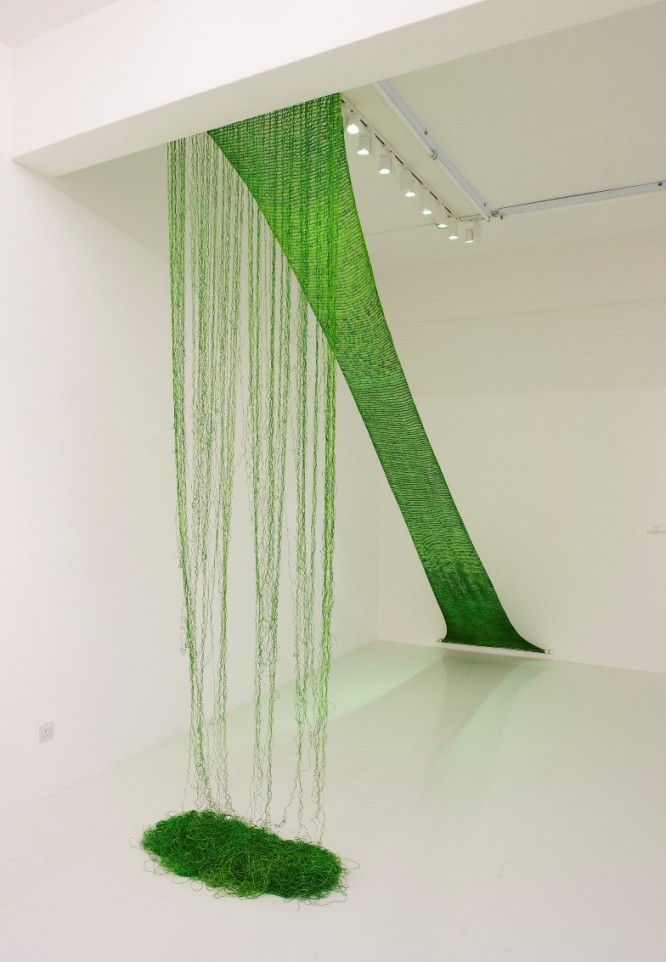Yavuz Fine Art is a gallery for Southeast Asian and Middle Eastern contemporary art in Singapore. Opened in April 2010 by the Turkish owner Can Yavuz, the gallery specializes in what it calls socially significant art from the region. And true to the PR, their program is distinctly engaged, breaking the boundaries of convention and zeroing in on issues pertinent to the region. In the opening week of the Singapore Biennale, Iona Whittaker met Can Yavuz at the gallery space, close to the Singapore Art Museum.
Iona Whittaker: You started in 2010.
Can Yavuz: Yes, our inaugural show was of Chinese landscape photography—it included Shao Yinong and Mu Chen—a photographer-couple from Beijing. Absolutely beautiful.
IW: How did that come about?
CY: Well, I was living in Hong Kong from 2006-7 to 2009. We decided to do the gallery in Singapore. I think we were one of the first in Singapore with this kind of concept, so in a way we were ahead of the curve, creating a space where we could actually show a little bit more outside the traditional boundaries—at least of what I was observing in Singapore. Everything was somehow within the norm of the rules and regulations, and so we decided to create a gallery where we really could show the cutting edge and with an element of surprise. Even if [people] have seen similar installations, we still put it into a context of the region and try not to disconnect it too much. We are based here, we focus on South-East Asia, and we support Southeast Asian artists. We have published, over the years, many different catalogs—our shows are curated.
IW: Who do you have to curate them?
CY: We have worked with Iola Lenzi (the curator and specialist on contemporary Southeast Asian art) — she’s from Singapore. We have worked with curators from Manila and from the Singapore Art Museum, too, for example.
IW: If you picture yourself starting the gallery at this point, would you change anything?
CY: I don’t think I would do anything differently. I have always been committed to doing very unique projects. I only work with artists that I like — I don’t follow the market. I don’t pick artists just because they appear in the auctions. I think many of the galleries coming to South-East Asia have started using Sotheby’s and Christies as a base for their selection (laughs). But this is not what we do. I have known these artists for more than 15 years. We work with artists we believe in.
IW: Do you feel that there has been an increase in receptiveness to this work amongst your clients here, as the art scene has been developing?
CY: There have been a lot of galleries coming in, but that doesn’t mean your collector base is multiplying accordingly. I think all the galleries are trying to build their client base in an environment which is very hard or concentrated—this is a small island.
IW: I mean more in the sense of collectors’ attitudes than actual numbers of clients.
CY: Well, we will continue focusing on Southeast Asian artists, not branching out into European artists. I don’t see that happening, necessarily. I think they are loyal to their collecting style. You may call it, also, safe. I call it consistent, staying within the boundaries of South-East Asia. We have seen more and more collectors who are interested in the Middle East and in Turkey, so I am starting to bring Turkish artists here. There’s a certain connection between South-East Asia and Turkey.
IW: If there was something you could name as the biggest influence on how your own gallery has developed in the last few years, what would it be?
CY: I think a lot of people come to us and say “Your exhibitions have a certain political ethos,” or a certain level of social criticism that is reflected in the choice of artists or the works. Maybe that’s true. But then, we are all influenced by our environment. Some people like to work with nature, some people like to work with themselves as a basis for their work, and I think in South-East Asia, naturally, politics is a key theme. So you will see a lot of artists from Thailand dealing with where Thailand is in the 21st Century as a monarchy, but at the same time a country divided between the yellow and the red shirts, and corruption and conflict; of course that’s what they will use and process in their art work. In the Philippines, I find art is driven by different emotions—and probably less subtly.
IW: I imagine you have seen every Biennale to date. Do you think the opportunity is being well-used?
CY: I think, yes. I don’t normally get involved in discussions about [the Biennale]—we end up not talking about the art, but trying to analyze how it all came about and why it was a failure, or not. But I think it’s a great platform. I don’t know if it was a good idea to have so many curators, but why do we even criticize that—I think it’s a fantastic opportunity for 27 people. Some people call it a mess. I call it an achievement. This year, I am happy to see some of the Japanese artists represented here, and some of the really exciting Burmese artists. Vietnam and Myanmar, I think, are also well-represented, and surprised me.
IW: What’s your feeling about the programming of the institutions here over the past couple of years?
CY: I think we are in a unique position here as a commercial gallery in Singapore. We are functioning in an environment which is highly supported and sponsored by a government program which runs parallel. That is unique. There is a lot of funding to establish Singapore as one of the key hubs, and as a hub that links Australasia up to China and Japan, Pakistan, the Middle East, etc. Museums are being built, and we have the National Art Gallery. I also think a very intellectual group of people are now running these institutions who are respected beyond Singapore, so that is a positive thing. Eugene Tan was just voted one of the top 100 most influential people in Art Review’s “Power 100,” so that I think is a reflection not necessarily only of him but of the efforts on every level, whether commercial or institutional.
IW: What might you say are the consequences to the art scene developing so quickly here?
CY: I think Singapore generally will always have a certain image in terms of how people perceive it—that because of all the regulated activities, it’s not “organic” enough, or too sterile. We both know that art has no formula. It needs to develop slowly, and it should not be planned or dictated. There has been a lot of criticism, for example, of the Gillman Barracks as this planned enclave that is very polished and posh for a selected group of galleries. I believe it’s a good thing—it attracts more interest in the arts, and the more galleries you have, the better. Then there’s another side who say “Yes, but you can’t force artists to move into artists’ studios and hang out there while tourists wander round the area,”—just to show there is an experience at Gillman Barracks that you could potentially reconstruct like Moganshan Lu in Shanghai or the art districts in Beijing. I agree that this is lacking here in Singapore. Artists can’t be controlled and put into rooms to work.
IW: Is there anything you’d like to add?
CY:I think you ask the right questions — Singapore has developed into a mega art center. We are part of it, and I’m happy to be here. I prefer to be here than in Hong Kong. We can distinguish ourselves better here with what we do. I find a higher level of appreciation here.




